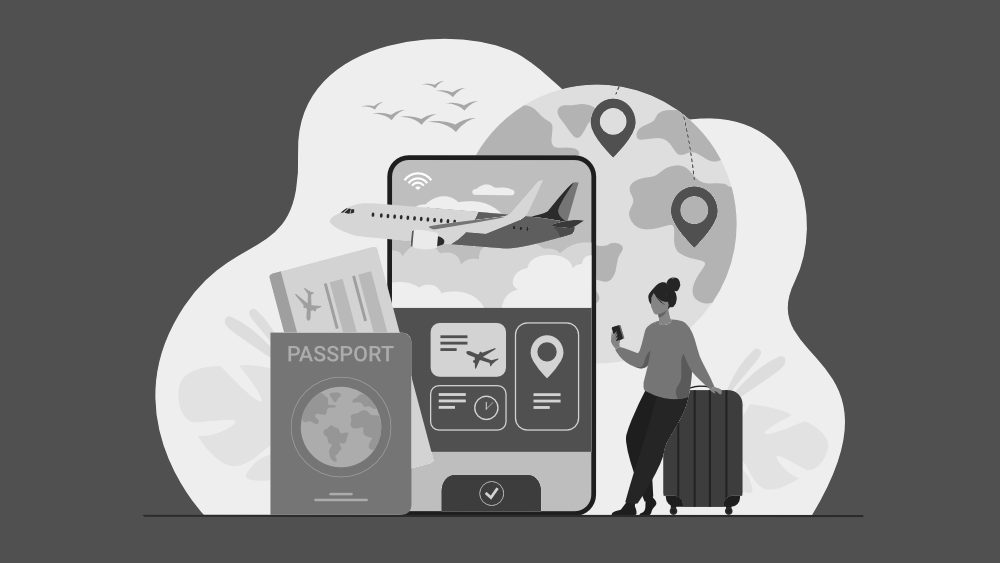Running a successful travel blog is the dream for many, but how do you go about creating one that is profitable? The key to this lies in web design. If you want to reel in tons of readers, your goal is to create a visually pleasing and easy to navigate website. Here is how you can do just that.
1. Use Lots of Images
A large part of traveling is the gorgeous aesthetics, so allow your readers to experience that by providing them with plenty of images from your travels. After all, that is why they are on your site! Make sure the images are relevant to the text to help paint a picture for your readers. You should also make sure that they load quickly enough; otherwise, you run the risk of people clicking off your site. One way to do this is to optimize your images.
You also need variety in your images, and this comes from the fun part – actually traveling!
Find new places on a budget by booking in advance, using hostels, and using ParkOn for cheaper airport parking.
2. Strip it Back
The last thing you want to do is overload your readers with too much information. When deciding on the layout, try to simplify it as much as possible to make getting around the site easier. If there’s too much going on, your readers won’t know where to click. Prioritize creating clear links and getting rid of any unneeded information. You’ll be left with a more user-friendly website, faster loading speeds, and returning readers.
3. Easy to Read Content
As a travel blogger, you will already know to curate well-written content, but you should also focus on the text structure. If your readers click onto your site only to be bombarded with huge chunks of text, you can be sure that they will quickly click off. Instead, make sure you break your text into enough paragraphs and make it easy to find.
4. Upgrade Your Lens
Improving your travel blog site isn’t all about coding and redesigning – a lot of the quality comes from your camera. When you are traveling the world, you want to capture each moment with crystal clear photography, so you must find excellent equipment for the job.
By showing only excellent pictures, your readers will associate your blog with high-quality. It’ll become far more visually pleasing, and you’ll find that more users end up back on your website to indulge in some high-res sunshine and detailed historical castles.
5. Choose Fonts Wisely
You should think about your fonts carefully when designing your blog’s website. While you might be tempted by a fancy font reminiscent of old times, you would be better using one that is easy to read. However, you could use the fancier one for a title to give a dash of uniqueness before allowing users to read on without obstacle.
Have a look around at other websites for some font inspiration. As you are perusing, ask yourself – which fonts were easiest to read? Which were overused? You don’t want your text to look the same as others, but you also want to avoid being over-the-top with font individuality.
6. Consider Mobile Users
Designing a desktop-friendly website is only half the battle – these days, many users visit sites from their phones. That means you must ensure that your website runs well on mobile so you don’t scare off a large percentage of visitors.
To make your blog look great on mobile, you should cut back on information even more. This means snappier, bolder titles, fewer chunks of text, and a larger font. You should also find ways of breaking up the text more, such as adding images between paragraphs.
7. Hire a Pro
As much as everyone loves to imagine they can handle web design, there are times that it is better left to a professional. Letting someone else design your website doesn’t mean giving up control; it means the results are more likely to look great and run smoothly.
Have a look around for some of the best web designers and allow a professional to create a smart, visually pleasing, and user-friendly site for your travel blog.
8. Test it Often
Even once you think you have perfected your site, you should still test it now and again. This is to make sure that everything is still running smoothly and it looks exactly how you want it. When going on the site, click on each link to see what the user experience is like.
You should also get your friends and family to test the site to receive different viewpoints. This is especially beneficial when coming from people who have not seen the process of the website, as their opinions will be completely fresh.
9. Think Color
The colors you choose for your website are everything. Colors can change moods, give impressions, and create an entirely different aesthetic. You will want to give a lot of thought to your website’s colors and try to match them to the content given. For example, if your travels mainly involve ocean escapes, then cool, calming shades like soft blues and greens would fit nicely. If your travel adventures are more hardcore, you could choose more striking colors.
A helpful rule to remember when choosing colors is the rule of three. This way, you won’t over-stimulate users with too much color. So, get some swatches out and start mixing and matching to find the perfect shades for your site.
Designing a website takes time, but you can greatly improve user experience and create something visually stunning with enough effort.

